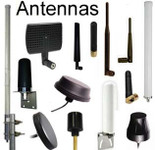Antennas, Antenna Cables, Wireless Products: Technical Articles
Antennas
Antennas for LTE mobile communication; IoT wireless, Wi-Fi, LoRa, and GPS navigation systems.
Antenna Designs That Rely on Coax Cable as Radiator: Avoid
Antenna Cables | Antennas
Antenna Cable Can Behave Like An Antenna: Risks & Problems
Antenna Cables | Antennas | MHF4 Connectors and Cables
Antenna Testing with Vector Network Analyzers (VNAs)
Antennas
How to Measure and Improve RSSI for Antennas and IoT Devices
Antennas | IoT - Internet of Things
RSSI & Antenna Performance and IoT Wireless Applications
Antennas | IoT - Internet of Things
Beamforming: How Modern Antenna Arrays Improve Connectivity
Antennas | Antennas-Directional
Massive MIMO: Game-Changer Cornerstone of 5G Networks
Antennas | LTE 4G & 5G
LTE 5G 4G 3G GSM Multi-Band Cellular Antennas
Antennas | Frequency Bands
Evolution of Antenna Design in 5G Networks | Massive MIMO
Antennas | LTE 4G & 5G
Flame-Retardant Plastics in Antennas' Materials Composition
Antennas







